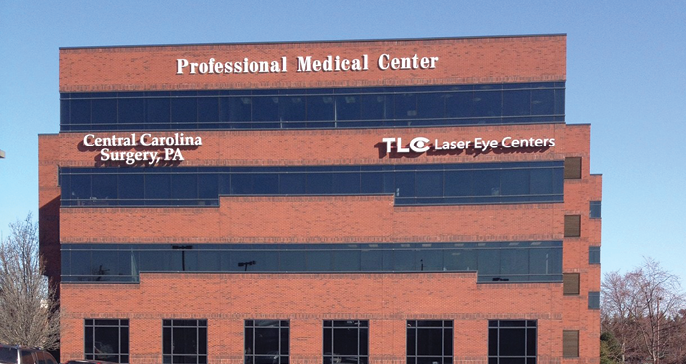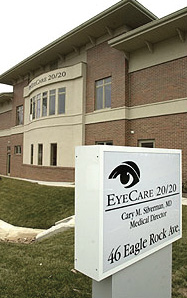In an era of decreasing reimbursement and increasing regulation, growing an ophthalmic surgery practice can be challenging, especially for those practices that are aiming for or have achieved annual revenue of around $10 million. That said, there are effective measures on which practices of varying sizes can rely for steady expansion. Planning ahead, hiring the right people, and tending to mutually beneficial referral relationships are among the approaches shared by successful single-site solo practices as well as multisite group practices. Additionally, these growing practices emphasize the early adoption of game-changing technologies and careful attention to staff and patient relations.
SERVICE > BELLS AND WHISTLES
Treating patients well might seem like an obvious step to growing a practice, but it is often underemphasized by clinicians and administrators, who tend to focus instead on implementing cutting-edge procedures and acquiring the newest technology. As practice management consultant Corinne Z. Wohl, MHSA, COE, told CRST, “Poor customer service chases patients away from the practice,” regardless of whatever other bells and whistles are in place. Ms. Wohl is the president of C. Wohl & Associates, a San Diego–based practice management consulting firm.
Sharing some of the moves that helped usher his multispecialty practice into the $10 million-in-annual-revenue club, John A. Hovanesian, MD, a partner at Harvard Eye Associates in Orange County, California (Figure 1), echoed Ms. Wohl’s message. “The first and most important thing to do is treat patients nicely,” he said. “If you do a good job of that and people refer to you, they will send their friends to your colleagues as well.”

Figure 1. Harvard Eye Associates in Orange County, California.
Similarly, David A. Goldman, MD, solo owner and medical director of Goldman Eye in Palm Beach Gardens, Florida, said, “Treat patients like family, and word of mouth will build your practice greater than any other means.” Dr. Goldman’s philosophy is personified by his small practice, which opened with three lanes in a leased Southern Florida space in 2013 and expanded to 12 lanes in a nearby medical arts building that he purchased and opened in 2017 (Figure 2). “The best path to success is to offer great care,” he added.

Figure 2. The outside (left) and inside (right) of Goldman Eye in Palm Beach Gardens, Florida.
PLANNING AHEAD
“Writing and following a long-term strategic plan provides a way to grow the practice by plan and not by opportunity,” Ms. Wohl said. “Jumping at opportunities such as a practice for sale rather than setting a development plan and following it down the path you have predetermined can result in a practice destiny that was unintended.”
Matossian Eye Associates, a vertically integrated, multispecialty ophthalmology and optometry private practice with three locations in Pennsylvania and New Jersey, is an example of a successful large practice that has a plan and is sticking to it. Ophthalmic surgeon and owner Cynthia Matossian, MD, FACS, said, “Strategic planning is key, with clearly outlined incremental steps and goals.”
Dr. Matossian explained, “Adding specialties to the practice created a quantum change, necessitating the purchase of new equipment, more staff, and additional office space.” Her tips for practices looking to make the leap from small to medium or medium to large include these: “Tap your existing patient pool by expanding the services you offer to capture additional revenue-generating paths. And, to ensure growth, the lead physician or managing partner should be engaged with the practice and its management team and must collaboratively work with all stakeholders.”
Dr. Hovanesian also highlighted the importance of planning ahead, particularly with respect to accounting for future space needs. “Space is the resource that growing practices will most likely run out of, if expansion is not planned for in advance,” he commented. “It is important to think of the future when acquiring space. If you have growth plans, you need to bake that into your lease or the space that you buy. For example, when we built our current office space, we constructed offices for administrative staff so the space could eventually be converted to meet the needs of the practice. Later, we moved the administrative staff out of the suite and converted that area into exam rooms.”
SHARE YOUR CULTURE
Practice growth and longevity are often factors in the chemistry among the stakeholders involved. Dr. Hovanesian was the fourth partner in his practice, which now comprises seven partners. “You have to find people who share your culture,” he said. “Take the time to find the right person. If necessary, wait a year until an appropriate person comes along. Being comfortable with the people you hire is important; do not take the first person who comes along or the first who wants to join your practice unless you feel quite comfortable that he or she will share your ethics. There is nothing better than having a great new partner and nothing worse than having a bad one. Seeing that great, new person develop into a successful practitioner who is happy working with you will be extremely gratifying.”
Identifying the right people goes beyond bringing on simpatico partners; surrounding oneself with like-minded staff and referral doctors has implications for practice growth as well. Karl G. Stonecipher, MD, of Piedmont Eye Surgical and Laser Center in Greensboro, North Carolina (Figure 3), pointed out that carefully chosen and trained staff members are the liaisons to his patients and referral doctors. In his practice, 4,000 to 5,000 cataract surgeries and about 2,000 laser vision corrections are performed per year; 294 optometrists as well as other primary care physicians (PCPs) refer patients to Dr. Stonecipher and his associates.

Figure 3. Piedmont Eye Surgical and Laser Center in Greensboro, North Carolina.
“We have always been a big, comanaged group, and the rationale behind that has been, if the comanaging doctors take care of patients, then surgeons can do more surgery,” he said. “Whenever I can spend more time in the operating suite, that means I am doing what I do well, and they can do what they do well. And ultimately, it means there are more patients to take care of the practice.”
Step Into the $10 Million Club
Without a strategic business plan and benchmarking initiatives in place, growing a practice can be more like one step forward, two steps back than a smoothly choreographed routine.
CRST spoke with Corinne Z. Wohl, MHSA, COE, about effective strategies for growing a practice, whether it is in its earliest stages or on the precipice of claiming its place in the $10 Million Club. Ms. Wohl’s practice management consulting firm specializes in ophthalmic leadership strategy, practice operations enhancement, financial benchmarking, and management team development.
CRST: What are some key steps to growing an ophthalmic surgery practice?
Ms. Wohl: Writing and following a long-term strategic plan is the most important step. The next step is to become a practice that makes data-driven decisions, which are integral to strengthening the practice. Results of decisions made from gut feelings often are disappointing; or, worse, they can actually be detrimental to the practice.
CRST: What are some examples of leadership that support effective growth and vice versa?
Ms. Wohl: Effective leadership strategies include having a written strategic plan for the practice; updating it annually; and conducting regular meetings with the board, management team, individual managers, and physician groups to ensure clear communication and direction. When a practice sets clear organizational goals and communicates them to all, the team has the ability to better march in step together.
CRST: How important is financial benchmarking and analysis to steady, long-term growth?
Ms. Wohl: Financial benchmarking and analysis are extremely important. They are similar to running diagnostic tests on the practice. The values tell you whether your efforts are working. When you use benchmarking as a tool, you are able to track practice successes and failures by knowing what treatment you applied and what the outcomes were.
CRST: What can adversely impact growth and should be avoided?
Ms. Wohl: Operational disintegrity stymies growth. When internal systems and processes break down, it can be frustrating to physicians, staff, and patients, and this can negatively affect growth.
REFERRAL NETWORKS AND NEW PATIENTS
A strategic maneuver some practices are implementing in 2018 is soliciting more referrals from PCPs. “We obviously cannot have PCPs follow-up with patients, but we can reach out to these providers to get referrals from their diabetic patients,” Dr. Stonecipher explained. “Getting a PCP to refer to us is interesting in that it presents an opportunity for us to refer those patients back to our comanaging optometrists. This model puts us in the position to gain new patients ourselves and to refer those patients for follow-up care to our network of optometrists who refer to us. We are simultaneously growing each other’s practices. It’s a win-win.”
Attracting new patients is one key to growth, but keeping patients is equally important. “We make sure that our front desk staff treats patients nicely and that our referral coordinator communicates in a way that will protect our relationships with our referral doctors,” Dr. Stonecipher said. “Perhaps most importantly of all, I call every single surgery patient the night of surgery to ask how he or she is doing. Even if I have 20 or 30 cases that day, the time that it takes for me to do this is more than made up for by the fact that it averts so many potential problems. If there ever is a problem, we can catch it quickly and head off a larger problem.”
Dr. Stonecipher also gives each patient his cell phone number. “Patients rarely take advantage of this, but it makes a big impression knowing that, if they need to call me, they can,” he said. “This is the kind of thing that fuels word-of-mouth referrals and practice growth.”
NEW TECHNOLOGY ADOPTION
Cary M. Silverman, MD, owner of the medium-sized EyeCare20/20 practice in Northern New Jersey (Figure 4), suggested that one key to moving up the revenue ladder is “having the foresight to recognize and embrace new game-changing technology early and to then fully implement it into your practice.”

Figure 4. EyeCare20/20 practice in Northern New Jersey.
Dr. Silverman founded his practice in 1986, when extracapsular cataract surgery was still the standard of care. “I committed fully to phaco, then to small-incision IOLs, topical surgery, and no-stitch surgery,” he said. “We were the first center in New Jersey to offer LASIK in-house in 1997 and the first to offer femtosecond laser cataract surgery in 2013. We were also very early adopters of premium IOLs.”
Dr. Silverman stressed that, regardless of what the hot technology or technique of the time is, the key is to “recognize it early and then seize the moment.”
CONSOLIDATION AND PRIVATE EQUITY
With respect to growing from a medium to a large practice, Dr. Silverman said, “there is a growing shift in the way business is done. Private equity will most likely be the key in moving many of us in this direction through consolidation and improving economies of scale.”
According to Dr. Hovanesian, taking strategic steps to grow one’s practice is even more important in the face of this trend toward private equity and consolidation. “As health care changes progress, the solo or two-person group practice is increasingly vulnerable,” he said. “You do not have the size to negotiate with payers who say, ‘These are your new payment terms. Accept them, or we will cut you out of the contract.’ They can live without you, but you may not be able to survive without them. You want to be at a size where they need you or where it is painful for them to go on without you.”
Dr. Hovanesian explained that there are two ways to do that. “One way is to be very popular with patients,” he said. “The second way is to grow to a point where they can’t afford to lose you. It’s best to do both. When you are large, they would rather pay more to keep you on board. By having a larger group, you get to work smarter. You get to do the same work and make more money by having better insurance contracts.”
CONCLUSION
There are many other factors that can influence a practice’s ability to grow, but putting patients first, planning ahead, hiring and retaining the right people, and aligning with strong referral networks are good places to start. Adding game-changing technologies, when the time is right, is also advised.










